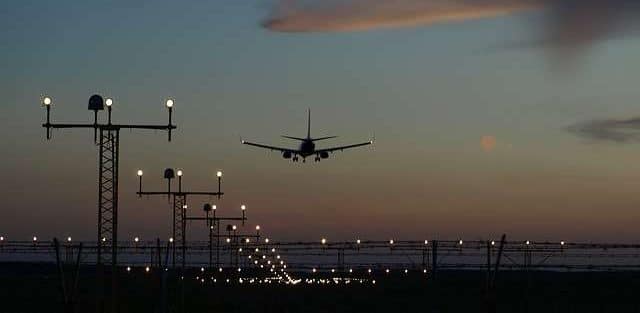Approach Light System

An approach light system is a visual guidance system that assists charter flights landing on runways by radiating light beams in directional patterns. They are an indispensible landing aid for aircraft that are approaching runways at night, as well as in adverse weather conditions, such as:
- Heavy rain
- Fog
- Snow
- Low cloud cover
Approach light systems are typically comprised of multiple light bars and strobes that extend outward from the runway end. These systems guide the pilot throughout the landing process, as well as indicate the boundaries of the landing area. While approach light systems are particularly useful when charter flights are operating in instrument meteorological conditions (IMC), but they're also used in visual meteorological conditions (VMC).
Major Airports
All major runways use approach light systems. They help pilots determine the proper alignment and approach angle when landing. Depending the prevailing conditions, the intensity of light emitted from an approach light system can be adjusted. For instance, when private charter flights touch down at night, or when visibility is poor, air traffic control has the ability to brighten the runway lighting, as needed. For airports that don’t feature an air traffic control tower, pilots can control lighting using a radio signal. They can also set the intensity of light to meet their needs.
An approach light system is a visual guidance system that assists charter flights landing on runways by radiating light beams in directional patterns. They are an indispensible landing aid for aircraft that are approaching runways at night, as well as in adverse weather conditions, such as:
- Heavy rain
- Fog
- Snow
- Low cloud cover
Approach light systems are typically comprised of multiple light bars and strobes that extend outward from the runway end. These systems guide the pilot throughout the landing process, as well as indicate the boundaries of the landing area. While approach light systems are particularly useful when charter flights are operating in instrument meteorological conditions (IMC), but they’re also used in visual meteorological conditions (VMC).
Major Airports
All major runways use approach light systems. They help pilots determine the proper alignment and approach angle when landing. Depending the prevailing conditions, the intensity of light emitted from an approach light system can be adjusted. For instance, when private charter flights touch down at night, or when visibility is poor, air traffic control has the ability to brighten the runway lighting, as needed. For airports that don’t feature an air traffic control tower, pilots can control lighting using a radio signal. They can also set the intensity of light to meet their needs.








